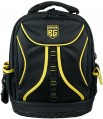The type of tool for which the container is normally intended.
—
For hand tools. Products intended primarily for hand tools - hammers, screwdrivers, pliers, etc. Such tools are relatively small in size and, most often, of a standard shape; so for such boxes there is no point in specifying compatibility (see below). Note that such products are not suitable for small items - so if you plan to work with a large amount of “small things”, it is worth finding a container that was originally designed for this (see below).
—
For tools and small items. Containers designed for both hand tools (see above) and for storing a large number of small parts. The specific design of such products may vary. Thus, in classic boxes (see “Type”), a cover with an organizer is most often provided for small items (see below); individual organizers for this purpose have compartments of different sizes; Vests and belt bags differ in size, respectively, pockets, etc.
—
Only for small elements. Containers intended only for small parts - fasteners (bolts, nuts, screws, nails), some types of working attachments (drills, bits), etc. The vast majority of such containers are classified as organizers (see “Type”), although there are and exceptions.
—
For power tools. Containers for this purpose are characterized by a high degree of
...specialization; they are usually made for specific models of power tools (see “Compatibility”). This is due to the fact that similar instruments (even of similar purpose and level) differ markedly in the general structure and arrangement of various structural elements. And even if compatibility for such a container is not indicated, most likely it is intended at least for equipment from a certain brand.The number of compartments and/or pockets provided in the design of the tool container (with the exception of organizers, including those built into the lid — for them the number of cells is indicated separately, see below).
The more compartments or pockets, the easier it is to keep numerous items in the container at the same time. On the other hand, more compartments (for the same product size) usually means smaller individual compartments. The most modest models have
up to 10 compartments / pockets, in the most capacious this number can
exceed 30. Of course, when choosing by this parameter, you should take into account the type of container (see above). So, for traditional boxes, the maximum value is actually
20 compartments, and among backpacks there are models with
20 – 30 compartments.

